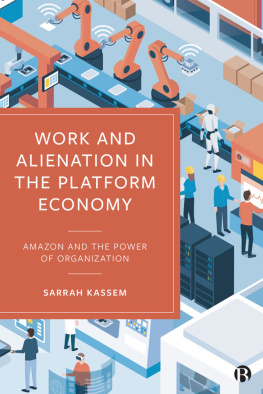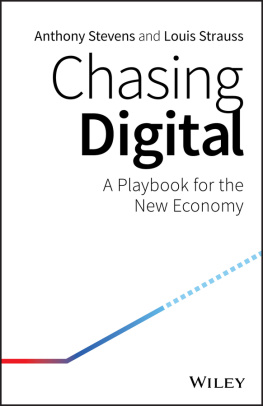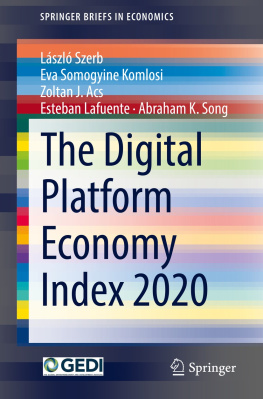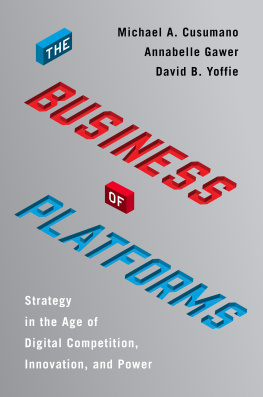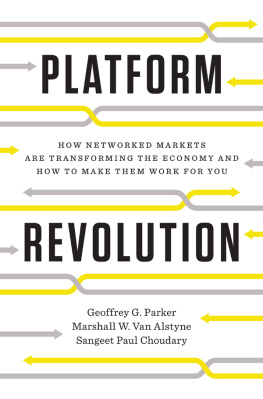2021 by Mauro F. Guilln
All rights reserved. No part of this book may be reproduced, in any form or by any means, without written permission of the publisher. Company and product names mentioned herein are the trademarks or registered trademarks of their respective owners.
Introduction
The Dawn of a New Age
The year was 1995. The internet age was dawning. A new digital company presented itself to the world as Earths Biggest Bookstore. It enabled purchasing books through a series of clicks, culminating in the physical delivery of the product. The customer could even have it wrapped as a gift before it was shipped to its recipient.
By the end of 2020, that digital company was worth $1.6 trillion, generating revenues of nearly $350 billion and employing more than 1 million people worldwide. It was engaged in the digital sale and physical distribution of not just books but all manner of goods, in addition to offering a marketplace, web services, and audiovisual content creation and distribution. Far from being a purely virtual company, it had amassed half a billion square feet of storage and logistics spaceroughly equivalent to all the office space in Manhattan. The company launched many other innovations, including one-click purchasing (1997), a premium membership program with free delivery (2005), the e-reader (2007), and same-day delivery (2015), among many other firsts.
People often mention that Amazon faces stiff competition in cloud computing (Microsoft Azure and Google Cloud) and video streaming (Netflix), but it continues to dwarf competitors in ecommerce such as Walmart, Etsy, and Shopify. Its core platform offers over 350 million products from nearly 2 million companies, both large and small, which gives it a unique view into what consumers like and dont like. The company makes it nearly impossible for even the most powerful brands in the world to skew its platform. Amazon is the gatekeeper, Scott Heedham, whose company BuyBoxer sells toys, sporting goods, and more, told the New Yorker. It makes all the rules.
Making all the rules inevitably raises the specter of antitrust investigations because of uncompetitive behavior. Amazon has been accused of unfair labor practices, turning a blind eye to counterfeit merchandise, and copying products for its AmazonBasics line. Many people deplore the fact that downtown areas are increasingly populated by empty storefronts while online retailers proliferate endlessly. Yet, Amazon seems poised to continue expanding in scale and scope, especially in the age of social distancing and remote work from the home.
Heres the paradox, however. For all its size, clout, and growth potential, Amazon derives 61% of its revenue from the US market, which represents less than 20% of the global economy. Its reach among internet users in the United States is about 75%. The company is not universally successful. In no country other than its own does it have more than a 50% market share in any category. In China, soon to become the worlds largest consumer market, its market share is a mere 0.4%. The Chinese companies Taobao and Tmall dwarf Amazon in total size as marketplaces. On the whole, Amazon accounts for just over half of the digital market in the United States, but only about 6% globally. Amazon could reach half of humanity in about 60 national markets. By contrast, one can enjoy a Coke in more than 200 countries and territoriesmeaning everywhere.
I wrote this book for two reasons. The first is that digital platforms are changing the rules of competition in the global economy. The worlds seven largest companies in terms of market capitalization are platform businesses in full or in part: Apple, Microsoft, Amazon, Alphabet, Alibaba, Facebook, and Tencent. Its a brave new world dominated by companies based in the United States and China, which dwarf their competitors in terms of R&D investment, cloud traffic, unique visitors, revenue, and profits. Until recently, it took Fortune 500 companies an average of 20 years to reach billion-dollar market valuations. Successful platforms reach that milestone in an average of four years. Digital platforms have led to a transformation of nearly every aspect of economic and social life, from retail trade and employment services to personal relationships and payment methods. In addition, established companies with traditional business models have jumped on the bandwagon by creating platforms of their own.
The second motivation came from a mundane observation: Most platforms considered to be successful have triumphed in only some, rather than all, parts of the worldlike Amazon. There are very few truly global digital platforms. In my more than three decades of studying multinational firms in industries such as apparel, automobiles, and banking, I found that they often misunderstood key aspects of what it takes to succeed globally, from culture and institutions to local competitive dynamics and pursuing markets in a logical sequence. Seeing multibillion-dollar companies like Amazon flounder in certain markets presented me with the opportunity to explore the limitations of different types of global strategies. People often assume platform businesses always become globally dominated by a company that ruthlessly exploits early-mover advantages, winner-take-all dynamics, tipping points, economies of scale, and network effects.
The platform paradox refers to a very basic observation and yields a disarmingly simple yet effective way of overcoming it. The observation, as illustrated by the example of Amazon, is that most platforms fail to reach anything that approaches global ubiquity. Many of them can be perfectly successful and profitable without dominating the entire marketsomething that will also help them avoid accusations of anticompetitive behavior. The only way for platforms to reach their growth potential before a competitor steals the opportunity is to (1) diagnose the underlying network effects, (2) assess the potential single-side, same-side, and cross-side dynamics, and (3) prioritize growth efforts by geography in a way that network effects are maximized over time. The success of digital platforms is, ultimately, a process and not a destination.
I decided to research dozens of digital platforms, talk to their managers, and collect information on their presence around the world. I was looking for an explanation as to why and how some of them have succeeded in different national markets to a much greater extent than others, in the hope of formulating a framework for managing platforms across national borders. This book is the result of that search.
Network Effects and International Strategy
Digital platforms bring together users like individuals and businesses, and the more individuals and businesses there are, the stronger the so-called network effects. The fundamental insight in this book is that all network effects are not created equal. For user A of a given digital platform, the value of an additional user B located in a different part of the world may be large or small, depending on the nature of the network effect.



